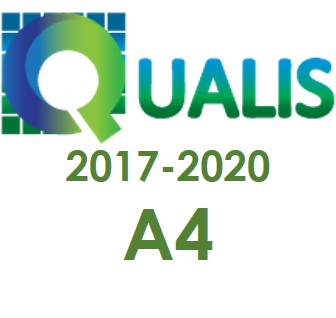Além do uso morfológico: o que o conhecimento semântico nos diz sobre o aspecto em português como L2
DOI:
https://doi.org/10.22481/el.v7i2.1097Keywords:
Aquisição de L2, Aspecto em português como L2, Teorias de continuidade da GUAbstract
Esse estudo investiga a aquisição do aspecto [±perfeito] em português L2, mediante conhecimento da distinção [± acidental] que ocorre entre o pretérito perfeito e imperfeito em frases com quantificação adverbial (LENCI; BERTINETTO, 2000; MENÉNDEZ-BENITO, 2002). Mostramos que os aprendizes L2 intermediários demonstram conhecimento da semântica sintagmática, que conforme argumentamos é acessível por meio da aquisição de novos traços da L2. Como resultado, propomos que os dados dão suporte a teorias de continuidade da GU (DUFFIELD; WHITE, 1999; SCHWARTZ; SPROUSE, 1996) e oferecem evidência contra as assim chamadas propostas de Traços Malsucedidos (FAILED FEATURES; BECK, 1998; HAWKINS; CHAN, 1997) para ASL (aquisição de segunda língua). Além disso, discutimos tais dados considerando abordagens probabilísticas para ASL, que interpretam erros de uso morfológico nesse nível como evidência de déficits subjacentes das representações mentais de L2. Em consonância com outros autores, argumentamos que o desempenho morfológico não é por si só uma medida direta ou exata da competência linguística (PRÉVOST; WHITE, 2000; LARDIERE, 1998, 2006).
PALAVRAS-CHAVES: Aquisição de L2. Aspecto em português como L2. Teorias de continuidade da GU.
Downloads
References
ANDERSEN, R.; SHARAI, Y. Discourse Motivations for some cognitive acquisition principles. Studies in Second Language Acquisition, v. 16, p. 133-56, 1994.
BARDOVI-HARLIG, K. Tense and aspect in second language acquisition: Form, meaning, and use. Malden, MA: Blackwell. 2000.
BECK, M. L. L2 acquisition and obligatory head movement: English-speaking learners of German and the local impairment hypothesis. Studies in Second Language Acquisition, v. 20, p. 311-348, 1998.
BONOMI, A. Aspect, quantification and when-clauses in Italian. Linguistics and Philosophy, v. 20, p. 469-514, 1997.
CHOMSKY, N. The Minimalist Program. Cambridge, MA: MIT Press, 1995.
_____. Minimalist inquiries: the framework. In: MARTIN, R; MICHAELS, D.; URIAGEREKA, J. (eds.) Step by Step: Essays on Minimalist Syntax in Honor of Howard Lasnik. Cambridge, MA: MIT Press, 2000. p. 89-156.
CLAHSEN, H. AND U. HONG. Agreement and null-subjects in German L2 development: New evidence from reaction time experiments. Second Language Research, v. 11, p. 57-87, 1995.
DEKYDTSPOTTER, L.; SPROUSE, R. A. Mental design and (second) language epistemology: Adjectival restrictions on wh-quantifiers and tense in English-French interlanguage. Second Language Research, v.17, p. 1-35, 2001.
DEKYDTSPOTTER, L.; SPROUSE, R. A.; ANDERSEN, B. The Interpretive Interface in L2 Acquisition: the Process-Result Distinction in English-French Interlanguage Grammars. Language Acquisition, v. 6, p. 297-332, 1997.
DUFFIELD, N.; WHITE, L. Assessing L2 knowledge of Spanish clitic placement: converging methodologies. Second Language Research, v. 15, n. 2, p. 133-160, 1999.
EPSTEIN, S.; FLYNN, S.; MARTOHARDJONO, G. Second language acquisition: Theoretical and experimental issues in contemporary research. Brain and Behavioral Sciences, v. 19, p. 677-714, 1996.
GIORGI, A.; PIANESI, F. Tense and aspect: From semantics to morphosyntax. Oxford: Oxford University Press, 1997.
GOAD, H.; WHITE, L. Ultimate attainment in interlanguage grammars: a prosodic approach. Second Language Research, v. 22, p. 243-268, 2006.
GOODIN-MAYEDA, C. E.; ROTHMAN, J. The acquisition of aspect in L2 Portuguese and Spanish: Exploring native/non-native performance differences. In: S. BAAUW, F. DIRJKONINGEN; PINTO, M. Romance languages and linguistic theory. Amsterdam: John Benjamins, 2007. p. 131-148.
HAWKINS, R. Revisiting Wh-movement: The availability of an uninterpretable [wh] feature in interlanguage grammars. In: DEKYDTSPOTTER, L. et al. Somerville, MA: Cascadilla. Proceedings of the 7th Generative Approaches to Second Language Acquisition Conference (GASLA 2004). 2005. p. 124-137.
HAWKINS, R.; CHAN, C. The partial availability of universal Grammar in second language acquisition: The ‘failed functional features hypothesis’. Second Language Research, v. 13, n. 3, p. 187-226, 1997.
KEMPCHINSKY, P.; SLABAKOVA, R. Aspectual Inquiries. Dordrecht: Springer. 2005.
LARDIERE, D. Dissociating syntax from morphology in a divergent L2 end-state grammar. Second Language Research, v. 14, p. 359-375, 1998.
LARDIERE, D. On morphological competence. In L. Dekydtspotter, R. A. Sprouse, & A. Liljestrand (eds.). Proceedings of the 7th Generative Approaches to Second Language Acquisition Conference (GASLA 2004). Somerville MA: Cascadilla Press, 2005. p. 178–192.
LARDIERE, D. Ultimate Attainment in Second Language Acquisition: A Case Study. Mahwah, NJ: Lawrence Erlbaum Associates. 2006.
LENCI, A. ; BERTINETTO, P. M. Aspect, adverbs and events: Habituality and perfectivity. In: HIGGINBOTHAM, J.; PIANESI, F.; VARZI, A. C. (eds.) Speaking of events. Oxford/New York: Oxford University Press, 2000. p. 65-287.
MENÉNDEZ-BENITO, P. Aspect and adverbial quantification in Spanish. In: HIROTANI, M.(ed.) Proceedings of the 32nd North Eastern Linguistics Society, GLSA. The University of Massachusetts, Amherst, MA. 2002. p. 365-382.
MONTRUL, S.; SALABERRY, R. The Acquisition of Spanish Tense and Aspect. In: LAFFORD, B.; SALABERRY, R. (eds.) The Acquisition of Spanish: The State of the Science.Washington DC: Georgetown University Press, 2003. p. 47-73.
PRÉVOST, P.; WHITE, L. Finiteness and variability in SLA: More evidence for missing surface inflection. Proceedings of the Annual Boston University Conference on Language Development, v. 23, p. 575-586, 1999.
_____. Missing surface inflection or impairment in second language acquisition?. Second Language Research, v. 16, p. 103-133, 2000.
ROTHMAN, J. Sometimes They Use It, Sometimes They Don’t: An Epistemological Discussion of L2 Morphological Production and Its Use as a Competence Measurement. Applied Linguistics, v. 28, n. 4, p. 609-615, 2007.
_____. Aspectual Morphology Use in Adult L2 Spanish & TheCompeting Systems Hypothesis: When Pedagogical and Linguistic Rules Conflict. Languages in Contrast, v. 8, n.1, p. 74-106, 2008.
ROTHMAN, J.; IVERSON, M. Poverty-of-the-stimulus and L2 Epistemology: Considering L2 Knowledge of Aspectual Phrasal Semantics. Language Acquisition: A Journal of Developmental Linguistics, v. 15, p. 4 270-313, 2008.
SALABERRY, R. Spanish past tense aspect: L2 development in a tutored setting. Amsterdam: John Benjamins, 2000.
SCHWARTZ, B.; SPROUSE, R. L2 cognitive states and the Full Transfer/Full Access Model. Second Language Research, v. 12, p. 40-72, 1996.
SLABAKOVA, R. Is there a Critical Period for Semantics? Second Language Research, v. 22, p. 302-338, 2006.
SLABAKOVA, R.; MONTRUL, S. Genericity and Aspect in L2 Acquisition. Language Acquisition, v. 11, p. 165-196, 2003.
SORACE, A. Native language attrition and developmental instability at the syntax-discourse interface: Data, interpretations and methods. Bilingualism: Language and Cognition, v. 7, p. 143-145, 2004.
_____. Syntactic optionality at interfaces. CORNIPS, L.; CORRIGAN, K. (eds.) Syntax and variation: Reconciling the biological and the social. Amsterdam: John Benjamins. 2005, p. 46-111.
TSIMPLI, I.-M.; SORACE, A. Differentiating interfaces: L2 performance in syntax-semantics and syntax-discourse phenomena. In: BAMMAN, D; MAGNITSKAIA, T.; ZALLER, C. (eds.) Proceedings of the 30th annual Boston University Conference on Language Development. Somerville, MA. : Cascadilla Press, 2006, p. 653-664.
WHITE, L. Universal grammar and second language acquisition. Philadelphia: John Benjamins. 1989.
_____. Second language acquisition and Universal Grammar. Cambridge, MA: Cambridge University Press, 2003a.
_____. Fossilization in steady state L2 grammars: Persistent problems with inflectional morphology. Bilingualism: Language and Cognition, v. 6, n. 2, p. 129-141, 2003b.
Downloads
Published
How to Cite
Issue
Section
License

Estudos da Língua(gem) is licensed under a Creative Commons Attribution 4.0 International License.
Authors who publish in the journal Estudos da Língua (gem) agree with the following terms:
The journal Estudos de Língua(gem) maintains the copyrights of the contributions published. These rights include the publication of the contribution and make its content available for free through the portal.













